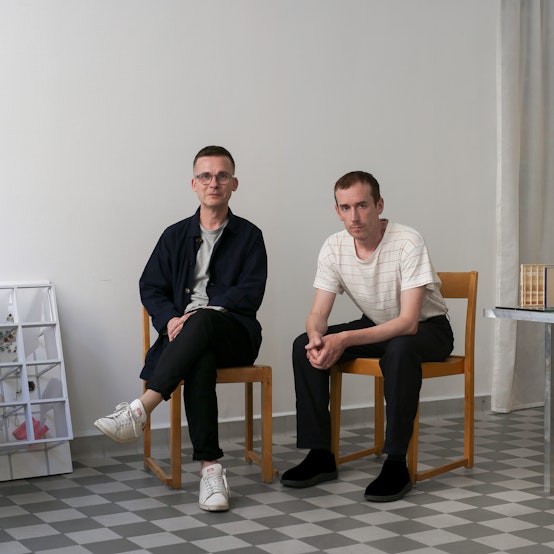The site’s history served as a starting point: it had been privately owned and enclosed by a brick wall until the 1970s. Raamland unfolded as a place for (re)discovery. Norell/Rodhe rid the sleepy square of its urban infrastructure and filled it with newly designed elements that merged the site’s history with its future potential.
The installation’s name alluded to the history of De Meers, a marshy urban area that had remained uninhabitable until the 17th century. As a result, it had mostly been used as ground on which to locate the wooden frames, or raamen, on which Flemish cloth was hung to dry.
Daniel Norell and Einar Rodhe introduced a new and contemporary framework for the site, constructed from a mix of standard components and unique finds. The work was largely composed of second-hand materials, harvested by the architects from reclamation businesses, container parks, construction sites, and local pass-it-on shops. Visitors spotted fragments of demolished mansions and villas in the installation, as well as parts of the old city archive and even a discotheque.
By stripping these construction materials of their original function and reusing them as new components, Norell/Rodhe wrote an alternative narrative that gradually revealed itself to visitors. A temporary plywood wall on the street side led the visitor inwards, past a pavilion that oscillated between a construction site and a domestic interior. The once tightly walled garden had been transformed into a lush patch of greenery, replete with local vegetables, herbs, berries, and shrubs. It invited visitors to linger on the square, read a book, have a bite to eat, or, if they felt like it, roll up their sleeves and get busy.
Raamland was an assemblage of materials and stories. It served as a testing ground for re(re)valuation and an investigation into how material flows could be dealt with differently in the future. It approached architecture as a living organism, something that gradually changed shape alongside its wider environment: the city.

Daniel Norell (b. 1973, Stockholm, SE) and Einar Rodhe (b. 1982, Uppsala, SE) established Norell/Rodhe in 2012. The Stockholm-based architecture practice views its work as a mediation between environment and user, or between the historical and contemporary, wherein an existing context shapes or contributes to a new one.

